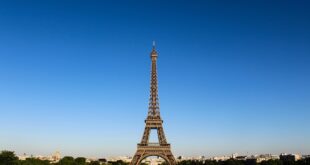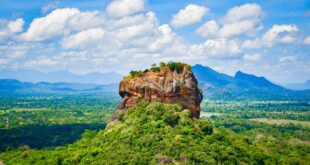Panama is an adventure wonderland just waiting to be discovered. The country’s expansive rainforests are among the richest and most complex on the earth . It’s the sole country where jaguars and pumas prowl just a brief drive from the capital. Its vast, roadless jungles are home to over 940 recorded bird species and 105 species , including the spectacled bear, the Central American tapir, the American crocodile, the scarlet macaw, also as several eagle species.

This small, untapped country offers a number of the best diving, birdwatching, and deep-sea fishing altogether of the Americas—yet only the foremost avid adventurers are conscious of it. Panama boasts many deserted palm-lined beaches, miles of lush rainforests, great national parks, mysterious mangroves (where you’ll desire you’ve been transported back to a time when dinosaurs walked the earth), steamy cloud forests, mountains, waterfalls, raging rivers, abandoned forts, also as desert.
In Panama you’ll spend the morning diving within the Caribbean and therefore the afternoon swimming within the Pacific. you’ll explore historic ruins of the colonial era…dive for Sir Francis Drake’s lead coffin (supposedly buried stumped near Portobello Bay)…see the rainforest in an aerial tram…ride a dug-out canoe to a native Indian village…discover the remote and mysterious forests of the Darién region right the border of Colombia (where the roads end a couple of miles before the border, leaving you with the sensation you’ve reached the top of civilization)…come nose-to-nose with a red-napped tamarind monkey or a trio of colourful toucans…
Conde Nast Traveler, in a piece of writing from its February 2005 issue said “Panama has temperate rain forests, great surf and beaches, and more birdlife than the other country in Central America. Now…it also features a newly elected administration that desires travelers to enjoy equally of it.”
Fortunately, Panama may be a small country. during a short one- or two-week trip, you’ll see much of what this diverse country has got to offer.
In this special report, the IL team proposes an idea to urge the foremost out of 24 hours in Panama. From a standard Panamanian breakfast to a visit to the Miraflores Locks to evening drinks during a little boutique hotel overlooking the Bay of Panama…we have it all thought out.
Breakfast in El Trapiche
Exploring the simplest Panama has got to offer is hungry work. Start your day on a full stomach and head for breakfast in El Trapiche, a busy diner in El Cangrejo (Vía Argentina, tel. (507)269-4353). Here you’ll enjoy breakfast Panama style and enjoys a hearty feed of carimañol—a yummy roll made from mashed yucca and full of hamburger and boiled eggs—and a side of corn tortillas, that more resemble silverdollar pancakes than taco shells. The bill should be but $8, even thereupon second café con leche.
Trip to the Miraflores Locks
No trip to Panama is complete without seeing the “Eighth Wonder of the planet ,” the Panama Canal . consistent with the Panama Canal Authority “The history of the development of the Panama Canal is that the saga of human ingenuity and courage: years of sacrifice, crushing defeat, and final victory.” This statement, while true, doesn’t go far enough to explain the mighty toll taken by the building of the Panama Canal . Construction began in 1904 and took 10 years to finish . It remains one among the best engineering achievements of all time, completed despite landslides, disease, setbacks, and therefore the loss of 75,000 lives in total. Engineers directed most of the particular construction, which cost $375 million, and involved the excavation of 240 million cubic yards of earth.
The Canal, 51 miles long, opened to shipping in August 1914 and was formally dedicated on July 12, 1920. In 1921, the U.S. paid Colombia $25 million as redress for the loss of Panama; in exchange, Colombia formally recognized Panama’s independence.
On average it takes a vessel eight hours to travel from one ocean to the opposite , passing through three sets of locks. the simplest place to ascertain the Canal is from the Miraflores Locks (open 9 a.m. to 5 p.m., admission free). confirm to urge to the Miraflores Locks for 9 a.m. as this is often once you are presumably to ascertain large ships passing through.
Tamales in Casco Viejo
By now you’re probably feeling a tad peckish… Time to mount a bus or hail a taxi and make your way toward Casco Viejo for tamales. If you’re in luck, you’ll encounter Luis Antonio Visuette on the streets of Casco Viejo, where he has been selling delicious homemade tamales, wrapped in plaintain leaves, for quite 10 years. together with his Yankee cap and five-gallon bucket of hot and spicy tameles calientitos, Luis is tough to miss. These lunchtime treats are available in both large (50 cents), and little (25 cents), and are a true hit when washed down with an ice-cold drink. International Living’s local office is found within the Casco Viejo area, within the Cathedral Plaza, next to the Panama Canal Museum and just ahead of the stunning Metropolitan Cathedral, so if you would like to enjoy your tamales in our office (Luis are going to be making the rounds) call certain a Panamanian style “power lunch.”
Explore Casco Viejo
Located at the mouth of the Panama Canal , Casco Viejo is that the oldest city on the Pacific Coast of the Americas…although it had been there long before the Canal was built.
In fairness to history, the first Panama City (now referred to as Old Panama or Panama La Vieja) was founded in 1519, about two miles from the middle of Panama City as we all know it today. From here, expeditions were mounted to overcome the Inca Empire of South America and every one of the wealth pillaged from Peru, Chile, and California flowed to Spain through Old Panama. it’s no surprise that this booty attracted pirates like Morgan , who looted the town in 1671.
During Morgan’s attack, this original Panama City was burned to the bottom . Two years later, in 1673, the capital was moved two miles to the west, and present-day Panama City was founded. this is often the world now referred to as Casco Viejo.
As the city was being rebuilt by the Spanish settlers, they decided to create a huge surrounding wall and a stronger fortress for its protection and to make sure that the big wealth in gold and silver that skilled it might nevermore be vulnerable to the likes of Morgan .
The new city boasted a cross-sectioned design of 38 blocks, with three main streets running from east to west and 7 streets running from north to south. Unfortunately, this urban development was interrupted by various fires that devastated its streets. In 1737, the “big fire” destroyed two thirds of the town , and therefore the “small fire” of 1756 destroyed quite 90 houses. These and other catastrophic fires help explain why so few true samples of Spanish colonial architecture exist today.
The fortress still survives, though, and today houses several important, cultural, and historic buildings and monuments. But it’s the architecture of Casco Viejo that creates it so special. The old Spanish colonial style is overlaid with French balconies and architecture, remnants of the French inhabitants who made the initial plan to build the Panama Canal in 1881. Over the years, a Caribbean influence also took hold and, today, Casco Viejo may be a melting pot of architectural inspiration and elegance , with some buildings dating as far back as 300 years.
Museums, shopping, and fortune telling
Up until the first parts of this century, Casco Viejo remained a thriving cultural center. But as Panama City modernized, and because the automotive age made transportation easier, it spread outward, leaving Casco Viejo behind. The old city’s narrow labyrinth streets were difficult for cars to maneuver and its buildings were obsolete as compared to modern skyscrapers being built. By the mid 1900s, Casco Viejo had gone the way of most city centers of that century. not the middle of Panama City, it had been too oppressed for the upper crust and quickly became a poor area of tenement-style housing.
The area is currently undergoing an entire transformation, however. Restaurants and bars are opening with gusto, tourists are coming in growing numbers, and other people from everywhere now want to form their homes in Casco Viejo.
In 1997, UNESCO declared Casco Viejo a Patrimony of Humanity. Today, it’s revered because the historic center of Panama City. Two- and three-story houses with flower-adorned balconies overlook narrow streets. At its tip is French Park, where you’ll find the French Embassy and a monument to the hardy French builders who began the Panama Canal . On one side is an historical Spanish building called Las Bovedas, now housing an gallery and French restaurant. Panama’s Supreme Court was once housed here. A walkway round the monument offers a pleasant view of the Amador Causeway, Bridge of America , and Panama City’s skyscraper skyline to the east. A plaque commemorates the firing of canon shots to keep off a Colombian warship and solidify Panama’s independence from Colombia in 1903.
There are excellent museums within the Casco Viejo area, including the Museo de Canal. Here, you’ll study Panama’s history because the connector between the Atlantic and therefore the Pacific from pre-Hispanic to times . nearby is that the Museum of National History and across the way is that the National Cathedral. Nearby may be a small museum dedicated to spiritual art, found within the old Santo Domingo monastery. this is often where you’ll find the famous straight arch , which reportedly helped convince engineers that Panama was earthquake-proof and a geologically stable area for building the Canal. a couple of blocks away is that the old San Jose Cathedral, with gleaming spires inlaid with mother-of-pearl and its beautiful gold altar, intricately carved of wood and gilded with gold. this is often a must see once you visit Casco Viejo.
Casco Viejo is home to the Presidential House. If you would like to ascertain this, make certain to return on a Sunday because it is closed to the general public for the remainder of the week. Famous sons and daughters of Panama also make their homes here, including actor/singer (and now Panama’s minister of tourism) Ruben Blades, and boxer Roberto Duran.
Bargain hunters can take an opportunity from the historical sights at Salsipuedes, which roughly translates to “get out if you’ll .” Located just before the doorway to Casco Viejo, it’s Panama’s bizarre bazaar, a street so narrow and crammed with vendors that it’s dark at noon. a couple of steps away is Santa Ana’s Plaza, where you’ll have your fortune told for just $5.
Dine at The Bristol
To finish off your day a la mode , make your thanks to The Bristol Hotel, just a brief taxi journey from Casco Viejo. Dining at the Barandas Restaurant at The Bristol Hotel is an occasion to savor. The Panamanian-inspired gourmet cuisine, restful ambiance, stunning presentation, elegant settings, and attentive service combine to make an unforgettable dining experience.
A Trip To Panama Caught Your Fancy?
Hopefully, this special report has given you a couple of ideas on the way to spend some time in Panama, but don’t forget that this amazing country has far more to supply . Pacific Coast beaches near the city; Coiba Island National Marine Park; and therefore the Darién Province to call just a couple of .
 Dreamz Turning Dreams Into Reality
Dreamz Turning Dreams Into Reality



